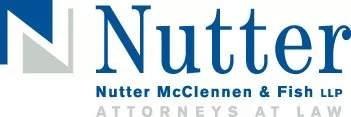Recently the Patent Trial and Appeal Board (PTAB) invalidated three patents held by Audatex North America, Inc. finding that the claims are not subject matter eligible under 35 U.S.C. §101 in view of the Supreme Court's decision in Alice Corp. Pty. Ltd. v. CLS Bank Int'l, 134 S.Ct. 2347 (2014). The three patents were generally directed towards "a method and system for entering data relating to an insurance claim for a damaged vehicle." In each case, the PTAB sided with the Petitioner, finding that the claims were directed towards the abstract idea of valuing a damaged vehicle based on information about that vehicle and therefore not patent eligible.
The PTAB, in agreeing with the Petitioner's argument, found that the claims in each of the three patents were generally directed towards a computer implementation of a known business method. Of note, the specifications of each patent at issue described the currently available software and methods for creating an automotive insurance claim in the prior art. The Panel1 found that "the '740 patent teaches that it would be more desirable to have the adjuster have easier access to the valuation database, such as through the world wide web, thereby obviating the need for the computer to have the phone numbers to reach the database." In other words, the specification notes that it would be advantageous to have easier access to various databases via the internet – as opposed to the dial in databases in the prior art.
Looking to the requirements of 35 U.S.C. §101, the Panel focused their inquiry of patent eligibility through the lens of the Supreme Court's framework in Alice. The test, as applied by the Panel is as follows:
The first step in the analysis is to "determine whether the claims at issue are directed to one of those patent-ineligible concepts." Id. If the claims are directed to a patent-ineligible concept, the second step in the analysis is to consider the elements of the claims "individually and 'as an ordered combination'" to determine whether there are additional elements that "'transform the nature of the claim' into a patent-eligible application." Id. (quoting Mayo, 132 S. Ct. at 1298, 1297). In other words, the second step is to "search for an 'inventive concept' — i.e., an element or combination of elements that is 'sufficient to ensure that the patent in practice amounts to significantly more than a patent upon the [ineligible concept] itself.'" Id. (brackets in original) (quoting Mayo, 132 S. Ct. at 1294). For example, the prohibition against patenting abstract ideas "'cannot be circumvented by attempting to limit the use of the formula to a particular technological environment' or adding 'insignificant post-solution activity.'" Bilski v. Kappos, 130 S. Ct. 3218, 3230 (2010) (quoting Diamond v. Diehr, 450 U.S. 175, 191–92 (1981)).
The Panel, in the first step in its review, looked to whether the claims are directed to an abstract idea. Here, the Panel found that "that each challenged claim is directed to the fundamental concept of providing a vehicle valuation using information about the vehicle." The Panel continued on, noting that the steps and calculations required by the claims could all be performed without the use of a computer; and that the concepts at issue in the claims were a "fundamental economic practice."
Looking to the second step of the Alice test, the Panel looked for any "additional elements that can transform the nature of the claim into a patent-eligible application of an abstract idea, that is, whether the claims do significantly more than simply describe that abstract idea." Agreeing with the Petitioner, the Panel found that the claims here were nothing more than "a generic computer programmed to perform the steps of the abstract concept." The Panel makes careful note that the invention included only generic computer systems that do not improve the function of a computer, nor solve a problem unique to the internet. Therefore, the Panel concluded the claim in each patent at issue were directed towards patent ineligible subject matter under 35 U.S.C. §101.
In light of these decisions, it becomes increasingly important for applicants to include as much detail relevant to their claimed systems and methods as possible. The detail can, and should, include any specialized hardware and any specialized algorithms that do in fact improve the function of a computer and solve problems unique to the internet. Also, limitations directed to improvements to a technology or technical field, or applications of the judicial exception to a particular machine should be included if possible. It may be beneficial to include varying levels of detail in dependent claims and other independent claims to ensure adequate coverage as the Section 101 law evolves. While it is increasingly difficult to predict what will pass muster under 35 U.S.C. §101, a wide breadth of coverage will provide the best opportunity for a court to find claims patent eligible.
Footnote
1. For the ease of discussion, details pertaining to the CBM2014-00171 case, concerning U.S. Patent 7,912,740 (the '740 Patent) will be referenced. However, the same line of reasoning carries through the two other cases.
This update is for information purposes only and should not be construed as legal advice on any specific facts or circumstances. Under the rules of the Supreme Judicial Court of Massachusetts, this material may be considered as advertising.



